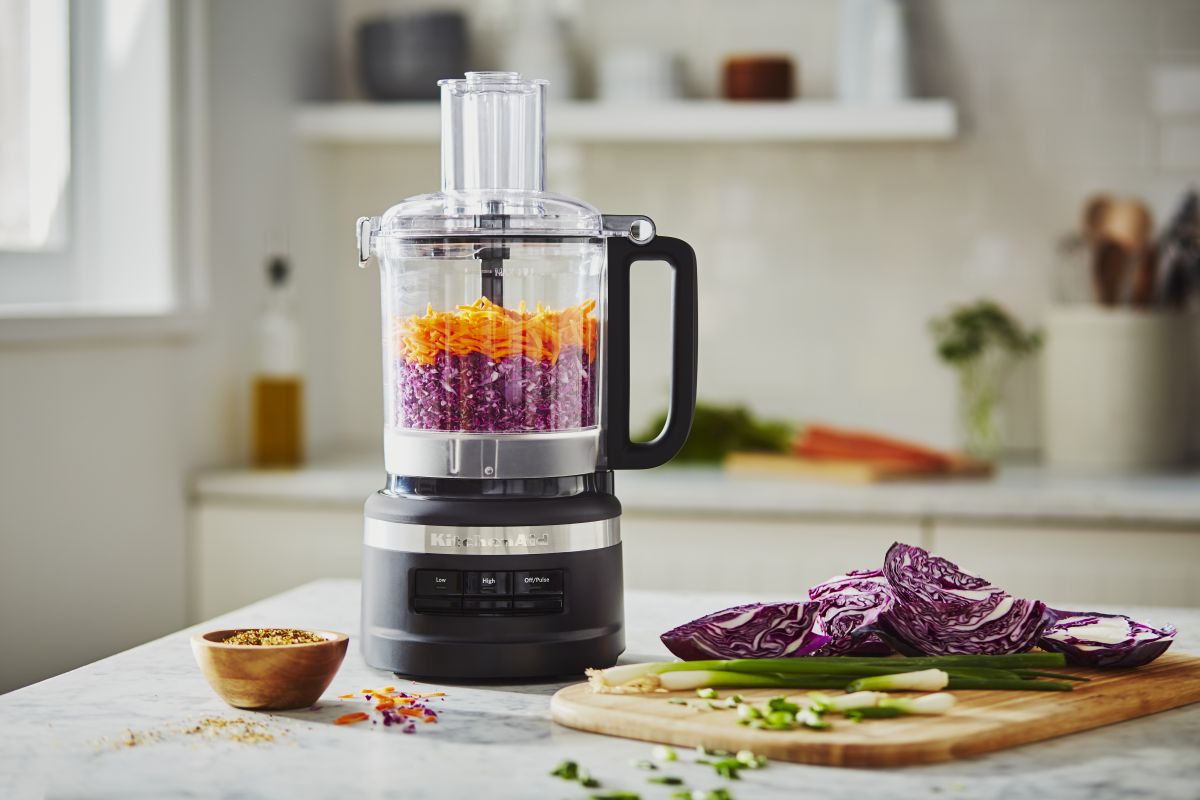

Articles
What Can I Do With A Food Processor
Modified: February 28, 2024
Discover a variety of articles on what you can do with a food processor. Explore recipes, tips, and ideas to maximize your culinary potential.
(Many of the links in this article redirect to a specific reviewed product. Your purchase of these products through affiliate links helps to generate commission for Storables.com, at no extra cost. Learn more)
Introduction
A food processor is a versatile and handy kitchen appliance that can greatly simplify your cooking and food preparation tasks. It is a powerful tool that can handle a wide range of functions, making it an essential addition to any kitchen. Whether you’re an amateur cook or a professional chef, a food processor can be your best friend in the kitchen.
This article will provide you with a comprehensive overview of what you can do with a food processor, highlighting its various functions and capabilities. From chopping and slicing to pureeing and blending, a food processor can save you time and effort in the kitchen, allowing you to create delicious meals with ease.
So, let’s dive in and discover the endless possibilities that await you with a food processor!
Key Takeaways:
- A food processor is a versatile kitchen appliance that can save time and effort by handling tasks such as chopping, slicing, pureeing, blending, kneading, and grinding, making it an essential tool for any cook.
- In addition to basic functions, a food processor can also be used for emulsifying dressings, dicing ingredients, juicing, and making frozen treats, expanding its versatility and making it an all-in-one kitchen appliance.
Read more: What Can I Use Instead Of A Food Processor
Overview of a Food Processor
A food processor is a motorized kitchen appliance that is specifically designed for a variety of food preparation tasks. It consists of a base unit that houses a powerful motor and a removable bowl or container where the food is processed. The bowl is usually equipped with various blades and disks, allowing you to perform different functions with ease.
Food processors come in various sizes, ranging from small compact models to larger, more robust ones. The capacity of the bowl can also differ, enabling you to process different quantities of food depending on your needs. The versatility and functionality of a food processor make it an indispensable tool in the kitchen.
Most food processors have multiple speed settings, allowing you to adjust the processing speed according to the type of food you’re working with. They also come with safety features such as a locking mechanism to secure the bowl and lid in place during operation, ensuring safe and efficient food processing.
When it comes to choosing a food processor, consider factors such as the power of the motor, the size and capacity of the bowl, and the availability of different attachments and accessories. These factors will determine the performance and versatility of the food processor, allowing you to make the most out of this essential kitchen appliance.
Food Processing Functions
A food processor offers a wide range of functions, making it a versatile tool for various food preparation tasks. Let’s explore some of the key functions of a food processor:
Chopping and Slicing
One of the primary functions of a food processor is its ability to chop and slice ingredients quickly and uniformly. With the help of a sharp blade attachment, you can effortlessly chop onions, garlic, herbs, and vegetables in a matter of seconds. The slicing function allows you to achieve consistent and even slices of fruits and vegetables, making it ideal for salads, stir-fries, and garnishes.
Shredding and Grating
Whether you need finely shredded cheese or grated carrots for a recipe, a food processor can make the process a breeze. The shredding and grating attachment allows you to grate or shred a variety of ingredients, saving you time and effort compared to manual methods.
Read more: What Size Food Processor Do I Need
Pureeing and Blending
From smoothies and sauces to baby food and soups, a food processor can effortlessly puree and blend ingredients to a smooth consistency. The powerful motor and sharp blades enable you to achieve creamy textures and perfectly blended mixtures in no time.
Kneading and Mixing
Do you love baking but dread the task of kneading dough by hand? A food processor can take the hard work out of kneading dough for bread, pizza, or pasta. The dough blade attachment allows you to quickly and efficiently combine and knead the ingredients, resulting in perfectly elastic dough.
Grinding and Grinding
Whether you want to grind your own spices or make your nut butter, a food processor can handle the task effortlessly. With the grinding and grinding attachment, you can easily grind spices, coffee beans, nuts, and seeds to the desired consistency.
Whipping and Whisking
Some food processors come with a whisk attachment, allowing you to whip cream, beat eggs, and create light and airy batters for cakes and desserts. This function eliminates the need for manual whisking and ensures consistent and fast results.
These are just a few examples of the many functions a food processor can perform. Its versatility enables you to tackle a wide variety of recipes and culinary techniques with ease. From basic food preparation to more complex tasks, a food processor is a valuable tool that can save you time and effort in the kitchen.
Chopping and Slicing
Chopping and slicing ingredients is a fundamental task in the kitchen, and a food processor can make this process quick, consistent, and hassle-free. Whether you’re chopping onions, garlic, herbs, or slicing fruits and vegetables, a food processor can handle it all.
When it comes to chopping, the food processor’s sharp metal blade attachment does the job efficiently. Simply place the ingredients into the bowl, secure the lid, and pulse the machine until the desired chop size is achieved. You can control the texture by adjusting the processing time – pulse for a coarser chop or run the machine longer for a finer chop.
Slicing with a food processor is just as easy. The slicing blade attachment allows you to achieve uniform and even slices of fruits and vegetables, ideal for salads, stir-fries, and garnishes. Just select the desired thickness and feed the ingredients into the food processor, and watch as perfectly sliced produce comes out in no time.
One of the main advantages of using a food processor for chopping and slicing is the time it saves. It can process large quantities of ingredients quickly and uniformly, much faster than manual chopping and slicing. This is especially beneficial when you need to prepare ingredients for recipes that require consistent sizes for even cooking or presentation.
Furthermore, using a food processor for chopping and slicing ensures consistent results every time. The sharp blades and powerful motor of the food processor guarantee that each piece is chopped or sliced evenly, eliminating the risk of uneven cooking or textures.
Using a food processor for chopping and slicing also reduces the risk of injury. Manual chopping with a knife can be time-consuming and may lead to accidents if not done carefully. With a food processor, you can achieve the same results without the risk of cutting yourself.
So, whether you’re preparing a salsa, finely chopping herbs for marinades, or slicing vegetables for a stir-fry, a food processor is the perfect tool to make the task quick, efficient, and hassle-free. It saves time, ensures consistent results, and reduces the risk of injuries, making it an invaluable addition to your kitchen arsenal.
Shredding and Grating
Shredding and grating ingredients can be time-consuming and labor-intensive if done manually. However, with a food processor, you can effortlessly shred and grate a variety of ingredients with ease.
When it comes to shredding, the food processor provides a quick and efficient solution. Whether you need shredded cheese for a pizza, cabbage for coleslaw, or carrots for a salad, the shredding attachment of a food processor can tackle the task effortlessly. Simply feed the ingredient through the food chute while the food processor is running, and within seconds, you’ll have perfectly shredded ingredients.
Grating is another function that a food processor excels at. From grating vegetables like carrots and zucchini to grating hard cheeses and chocolate for toppings, a food processor can handle it all. The grating attachment consists of sharp blades that grate the ingredients into uniform shreds, saving you time and effort compared to manual graters.
One of the significant advantages of using a food processor for shredding and grating is the consistency it provides. The blades of the food processor ensure that each piece is evenly shredded or grated, resulting in uniform textures and cooking times. This is particularly important when making dishes like gratins or garnishing meals where evenness is crucial.
Using a food processor for shredding and grating also saves you considerable time. It can process large quantities of ingredients quickly and efficiently, effortlessly producing the desired results. This is especially helpful when you have to prepare large meals or when you’re working with ingredients that require a lot of shredding or grating.
Furthermore, using a food processor for shredding and grating reduces the strain on your hands and arms. Manual shredding and grating can be tiring and time-consuming. With a food processor, all you need to do is feed the ingredients into the chute and let the machine do the work for you, resulting in less fatigue and more efficient cooking.
Overall, a food processor is an essential tool for shredding and grating. It saves time, ensures consistent results, and reduces the strain on your hands and arms. Whether you need shredded cheese, grated vegetables, or chocolate shavings, a food processor makes the task effortless, allowing you to create delicious meals without the hassle.
Pureeing and Blending
Pureeing and blending are essential techniques in the kitchen, whether you’re making smoothies, soups, sauces, or baby food. A food processor is a convenient tool that can help you achieve smooth and creamy textures with ease.
The powerful motor and sharp blades of a food processor make pureeing a breeze. Whether you’re working with cooked vegetables, fruits, or even beans, the food processor can break down the ingredients into a smooth and consistent puree. Simply place the ingredients in the bowl, secure the lid, and let the food processor do the work for you. Within seconds, you’ll have a velvety puree ready to use in your recipes.
Blending is another function that a food processor excels at. From making smoothies and milkshakes to creating creamy sauces and dressings, a food processor can blend ingredients seamlessly. The rotation of the blades ensures that all the ingredients are mixed thoroughly, resulting in smooth and even-textured blends.
Using a food processor for pureeing and blending offers several advantages. Firstly, it saves time and effort compared to using a blender or a manual method. Food processors typically have larger capacities, allowing you to process larger quantities at once, saving you time and the need for multiple batches.
Another benefit is the versatility. A food processor can handle a wide variety of ingredients, from soft fruits to fibrous vegetables. It can even puree hard ingredients like nuts into creamy nut butter. The ability to puree and blend a wide range of ingredients in one machine makes the food processor a versatile and valuable tool in the kitchen.
Additionally, using a food processor for pureeing and blending allows you to have control over the texture of your purees and blends. Whether you prefer a smooth and creamy consistency or a chunky texture, you can achieve the desired result by controlling the processing time. This flexibility gives you the freedom to create a wide range of recipes and adapt them to your personal preferences.
In summary, a food processor is a versatile tool for pureeing and blending ingredients. It saves time, offers versatility, and gives you control over the texture of your purees and blends. Whether you’re making creamy soups, smooth sauces, or nutritious smoothies, a food processor is a valuable asset in creating delicious, well-blended dishes.
Kneading and Mixing
Kneading and mixing dough or batter by hand can be a laborious task, but with a food processor, it becomes a quick and effortless process. The food processor’s powerful motor and specialized attachments make kneading and mixing tasks a breeze.
When it comes to kneading dough, a food processor equipped with a dough blade attachment can save you a significant amount of time and effort. Simply add your ingredients to the bowl, secure the lid, and pulse the machine until the dough comes together. The dough blade’s unique design ensures that the ingredients are properly mixed, resulting in a well-kneaded dough with a consistent texture.
Not only does a food processor make kneading dough easier, but it also ensures a uniform and consistent result. The powerful motor and the motion of the blades provide thorough mixing and kneading, eliminating any risk of unevenly mixed ingredients. This is particularly important in baking, where even distribution of ingredients in the dough is crucial for achieving consistent results.
In addition to kneading dough, a food processor can also handle mixing tasks. Whether you’re making cake batter, pancake batter, or cookie dough, a food processor can efficiently combine the ingredients, saving you time and effort compared to manual mixing methods. The precise control over the processing speed and the consistent mixing action of the blades ensure that the ingredients are thoroughly incorporated, resulting in a smooth and evenly mixed batter.
Using a food processor for kneading and mixing offers several advantages. Firstly, it saves you considerable time and effort. Kneading and mixing by hand can be time-consuming and physically demanding, but a food processor can perform these tasks faster and with less exertion. This is especially beneficial when you need to prepare large quantities of dough or batter.
Additionally, a food processor provides consistent and reliable results. The powerful motor and the specially designed blades ensure that the ingredients are mixed or kneaded evenly, resulting in consistent textures and flavors in your baked goods. This makes a food processor an invaluable tool for professional bakers and home cooks alike.
In summary, a food processor is a fantastic tool for kneading dough and mixing batter. Its powerful motor, specialized attachments, and precise control over the processing speed make these tasks quick and effortless. Whether you’re making bread, pastries, or batters, a food processor can help you achieve consistent, well-mixed results with ease.
Grinding and Grinding
A food processor is not only useful for food preparation tasks like chopping and slicing, but it is also a handy tool for grinding and pulverizing various ingredients. Whether you need to grind spices, coffee beans, nuts, or make your own nut butter, a food processor can handle the task efficiently.
When it comes to grinding, a food processor with a grinding attachment or a dedicated grinding blade can easily process ingredients into a fine powder or a coarse texture, depending on your preference. You can grind whole spices such as cinnamon sticks, peppercorns, or cumin seeds, enhancing the flavor and aroma of your dishes. Grinding your own spices also ensures that you have fresh and flavorful results.
If you’re a coffee lover, a food processor can be a great alternative to a traditional coffee grinder. Simply pour your coffee beans into the bowl of the food processor, attach the grinding blade or use the regular blade, and pulse until you achieve the desired grind consistency. You can experiment with different grind sizes to match your preferred brewing method, whether it’s a French press, pour-over, or espresso machine.
Furthermore, a food processor can tackle the task of grinding nuts. Whether you want finely ground almonds for baking or you’re looking to make your own almond meal or nut butter, a food processor can handle this with ease. The powerful motor and sharp blades break down the nuts into a fine texture, allowing you to use them in various recipes.
Using a food processor for grinding and pulverizing ingredients offers several advantages. Firstly, it allows you to have control over the texture and consistency of the end product. You can customize the grind to match your specific needs and preferences, ensuring the best results in your cooking and baking endeavors.
In addition, grinding ingredients with a food processor saves you time and effort. The powerful motor and sharp blades do the work quickly and efficiently, reducing the time spent on manual grinding methods. This is particularly beneficial when you need to process large quantities of ingredients or when you’re in a rush to prepare a meal or a recipe.
Overall, a food processor is a versatile tool for grinding and pulverizing various ingredients. From spices and coffee beans to nuts and seeds, a food processor can handle these tasks with ease, offering you convenience, control, and time-saving benefits in your culinary adventures.
Whipping and Whisking
A food processor is not just limited to chopping and blending; it can also excel at whipping and whisking tasks, giving you the ability to create light and airy textures in your culinary creations. Whether you want to whip cream, beat eggs, or create fluffy batters, a food processor can make these tasks a breeze.
Some food processors come with a whisk attachment or a dedicated whisking blade that allows you to whip and beat ingredients with ease. Whether you’re whipping cream for desserts or beverages, beating eggs for omelets or baking recipes, or creating light and fluffy batters for cakes and pastries, a food processor can handle these tasks efficiently.
The powerful motor of the food processor and the specially designed whisking blade ensure that the ingredients are thoroughly whisked and incorporate an ample amount of air, resulting in light and fluffy textures. The continuous rotation of the blade creates the whipping action necessary to achieve the desired results.
Using a food processor for whipping and whisking offers several benefits. Firstly, it saves you time and effort compared to whisking by hand. Whisking by hand can be tiring, especially when you need to whisk for an extended period or whip large quantities. With a food processor, you can achieve the same results in less time and with less physical exertion.
In addition, a food processor provides consistent and reliable results. The powerful motor and the controlled whisking speed ensure that the ingredients are evenly whisked, resulting in consistent textures and desired peaks. This makes it a useful tool for professional bakers and home cooks seeking consistent and polished results.
Furthermore, using a food processor for whipping and whisking allows you to have better control over the process. You can adjust the speed and duration of the whisking to achieve the texture and consistency you desire. Whether you want stiff peaks for meringues or soft peaks for whipped cream, a food processor gives you the flexibility to achieve your desired outcome.
In summary, a food processor is an excellent tool for whipping and whisking tasks. It saves time and effort, provides consistent and reliable results, and allows you better control over the whisking process. Whether you’re whipping cream, beating eggs, or creating light and fluffy batters, a food processor is a powerful ally in achieving the desired textures in your culinary creations.
Other Useful Functions
In addition to the primary functions mentioned earlier, a food processor offers various other useful functions that can simplify your cooking and food preparation tasks. Let’s explore some of these additional functions:
Emulsifying and Dressing
With the help of a food processor, you can easily emulsify and create homemade dressings and sauces. The powerful motor and blending action of the food processor allow you to combine oil, vinegar, herbs, and other ingredients to create creamy and well-emulsified dressings like mayonnaise, vinaigrettes, and more.
Read more: What Does A Food Processor Do
Juicing
While a food processor may not be the primary appliance for juicing, certain models may come with attachments or accessories that allow you to extract juice from fruits and vegetables. These attachments can be handy when you need small amounts of juice for recipes or if you prefer a pulpy texture.
Dicing
Some food processors come with a dicing attachment, which can efficiently dice ingredients like onions, potatoes, and tomatoes. This attachment is particularly useful when you need precise and uniform dices for your recipes, saving you time and effort compared to manual dicing methods.
Citrus Zesting and Grating
If you need to zest citrus fruits or grate the rind for recipes, a food processor can handle these tasks with ease. The sharp blades of the food processor can grate the zest of citrus fruits quickly and efficiently, adding a burst of flavor to your dishes.
Homemade Nut Milk
A food processor can be used to make delicious and nutritious nut milk at home. By blending soaked nuts with water and other flavorings, you can create creamy and customized nut milk free of additives and preservatives.
Frozen Treats
Some food processors have attachments specifically designed for making frozen treats like ice cream, sorbet, and frozen yogurt. These attachments can churn the mixture, incorporating air into the mixture, resulting in a smooth and creamy frozen treat.
These additional functions of a food processor enhance its versatility and make it an all-in-one kitchen appliance. Whether you’re emulsifying dressings, dicing ingredients, or making homemade nut milk, a food processor can make these tasks more convenient and efficient.
Recipes and Ideas for Using a Food Processor
A food processor is a versatile tool that can open up a world of culinary possibilities. Here are some recipes and ideas for using a food processor to inspire your cooking creativity:
Homemade Pesto
Make your own flavorful pesto by combining fresh basil, garlic, pine nuts, Parmesan cheese, and olive oil in the food processor. Process until smooth, and you have a vibrant and delicious sauce to toss with pasta, spread on sandwiches, or use as a dip.
Energy Balls
Create healthy and tasty energy balls by pulsing together dates, nuts, seeds, and your favorite flavorings in the food processor. The machine will help blend and bind all the ingredients together, allowing you to easily roll them into convenient and nutritious snacks for on-the-go.
Read more: Why Do I Need A Food Processor
Cauliflower Rice
Rice cauliflower in the food processor to create a low-carb and versatile alternative to traditional rice. Simply pulse cauliflower florets until they resemble rice grains, and then sauté or steam them for a healthy and delicious side dish.
Homemade Hummus
Blend chickpeas, tahini, garlic, lemon juice, and olive oil in the food processor to create smooth and creamy homemade hummus. Customize the recipe by adding roasted bell peppers, sun-dried tomatoes, or spices for additional flavor variations.
Flourless Nut Butter Cookies
In a food processor, combine nut butter, honey, an egg, and your choice of mix-ins like chocolate chips, dried fruits, or nuts. Pulse until the ingredients are well incorporated, then shape the mixture into cookies and bake for a delicious gluten-free treat.
Salsa or Fresh Tomato Sauce
Create a flavorful salsa or fresh tomato sauce by pulsing together fresh tomatoes, onions, garlic, jalapenos, and your choice of seasonings in the food processor. Adjust the consistency to your liking, and enjoy the vibrant flavors on tacos, chips, pasta, or as a topping for grilled meats and vegetables.
These are just a few examples of the many recipes and ideas you can explore with a food processor. The possibilities are endless, so don’t limit yourself. Experiment with different ingredients, flavors, and textures to create your own unique dishes and culinary masterpieces.
Read more: What Is The Best Food Processor
Cleaning and Maintenance Tips
To ensure the longevity and optimal performance of your food processor, proper cleaning and maintenance are essential. Here are some tips to keep your food processor in top shape:
1. Unplug and Disassemble
Before cleaning your food processor, always make sure to unplug it from the power source for safety. Disassemble the parts of the food processor, such as the bowl, lid, and blades, according to the manufacturer’s instructions.
2. Hand Wash Removable Parts
All removable parts, such as the bowl, lid, blades, and attachments, should be washed by hand using warm water and mild dish soap. Avoid using abrasive cleaners or scouring pads that could damage the surfaces.
3. Remove Food Residue
Take care to remove any food residue or debris from the blades or around the base of the food processor. Use a sponge, brush, or toothpicks to reach into crevices and remove any stuck-on residue.
Read more: Food Processor What To Look For
4. Avoid Submerging Motor Base
The motor base of the food processor should never be immersed in water or submerged. Instead, clean it with a damp cloth or sponge to remove any spills or stains. Ensure the area is completely dried before reassembling the machine.
5. Dry Thoroughly
After washing the parts, ensure they are thoroughly dried before reassembling the food processor. Moisture can lead to mold or damage if left inside the machine. Air dry or use a clean towel to pat dry the components.
6. Store Properly
Store your food processor in a clean and dry area where it won’t be exposed to moisture or extreme temperatures. Keep the attachments, cords, and accessories neatly organized to prevent damage and minimize clutter.
7. Regular Maintenance
Occasionally, check the condition of the blades, seals, and other components of the food processor. If any parts are showing signs of wear or damage, it may be necessary to replace them to maintain the functionality and safety of the machine.
Read more: What To Make In Food Processor
8. Follow Manufacturer’s Instructions
Always refer to the manufacturer’s instructions and guidelines for specific cleaning and maintenance recommendations. Different models may have varying requirements, so it’s important to follow the instructions provided to ensure proper care of your food processor.
By following these cleaning and maintenance tips, you can keep your food processor clean, hygienic, and in excellent working condition for years to come. Regular care will not only extend its lifespan but also ensure safe and efficient operation every time you use it.
Conclusion
A food processor is a versatile and indispensable tool in the kitchen, offering a wide range of functions that can simplify your cooking and food preparation tasks. From chopping and slicing to pureeing and blending, a food processor can save you time, effort, and achieve consistent results.
With its powerful motor, sharp blades, and various attachments, a food processor can tackle a multitude of tasks with ease. From whipping cream and beating eggs to grinding spices and making homemade nut butter, the possibilities are endless. It can help you create delicious and nutritious recipes, experiment with flavors, and save you valuable time in the kitchen.
Furthermore, a food processor is not just limited to basic functions. It can be used for emulsifying dressings, dicing ingredients, juicing, and even making frozen treats. Its versatility allows you to explore new culinary techniques and expand your cooking repertoire.
Proper cleaning and maintenance are essential to keep your food processor in optimal condition. By following the recommended cleaning steps and regular maintenance, you can ensure the longevity of your machine and enjoy its benefits for years to come.
In conclusion, a food processor is a valuable and versatile kitchen appliance that can elevate your cooking experience. It simplifies various food preparation tasks, saves time and effort, and opens up a world of creative possibilities in the kitchen. Invest in a food processor and unlock the full potential of your culinary skills.
Frequently Asked Questions about What Can I Do With A Food Processor
Was this page helpful?
At Storables.com, we guarantee accurate and reliable information. Our content, validated by Expert Board Contributors, is crafted following stringent Editorial Policies. We're committed to providing you with well-researched, expert-backed insights for all your informational needs.
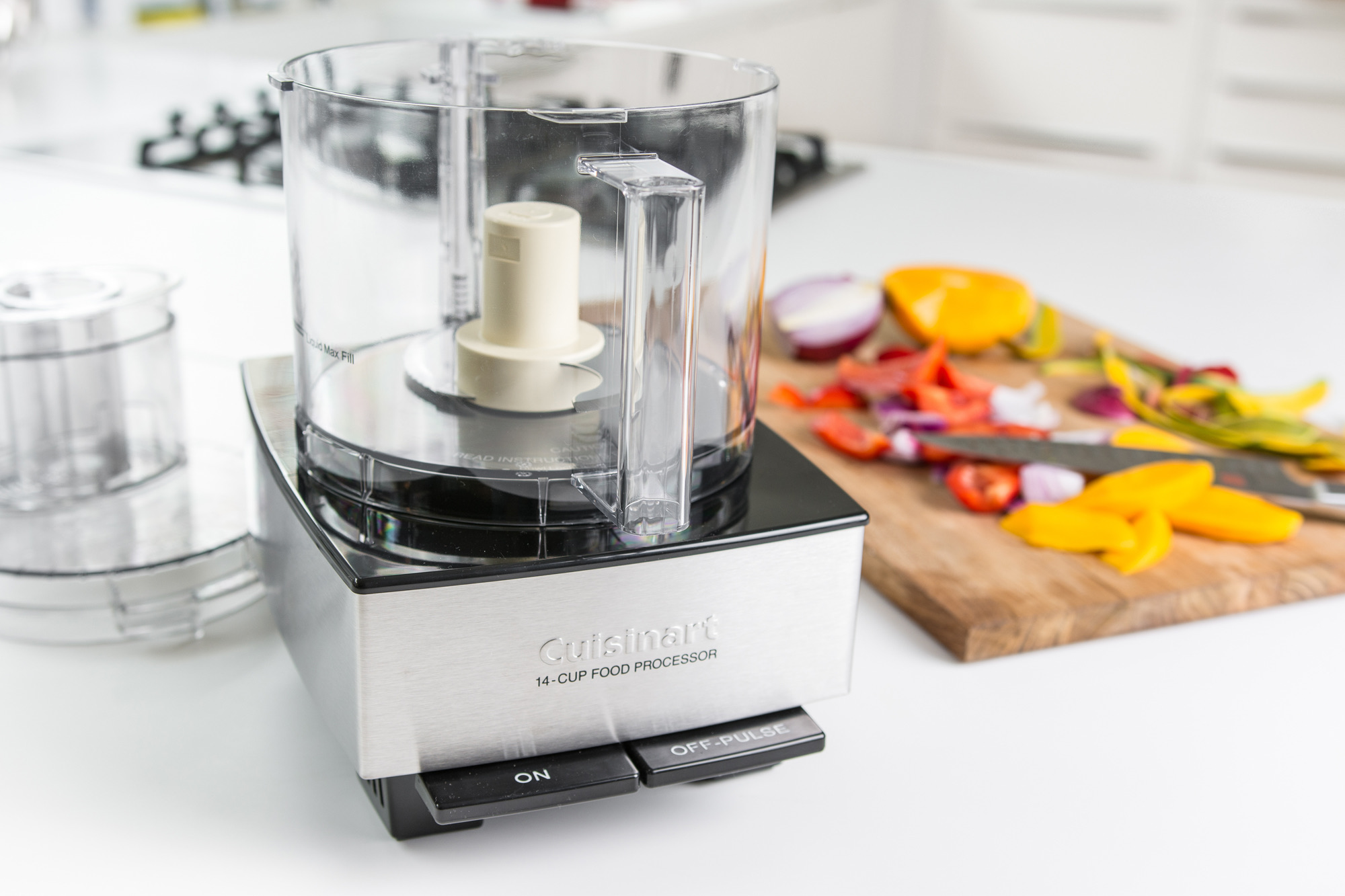
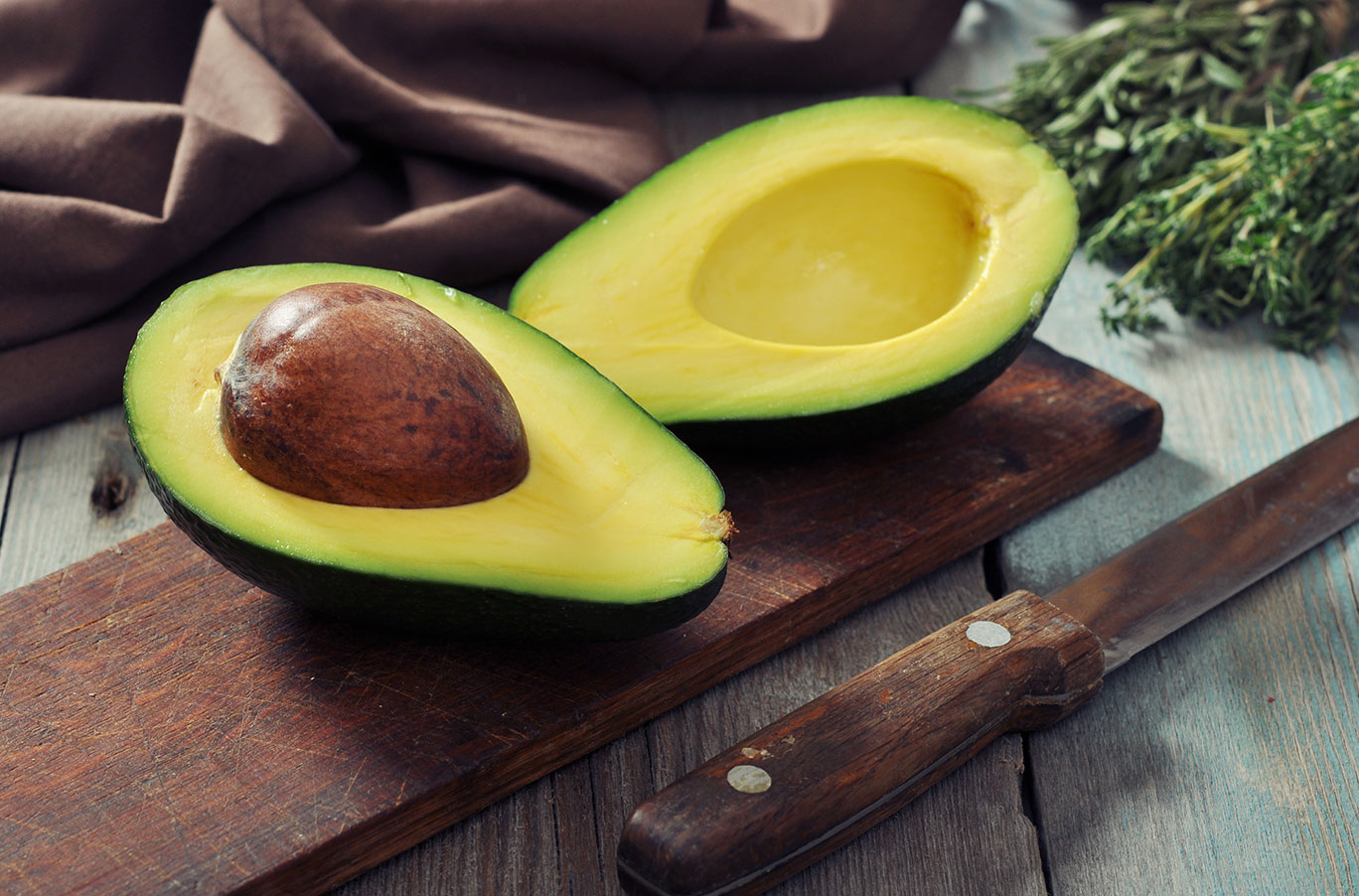

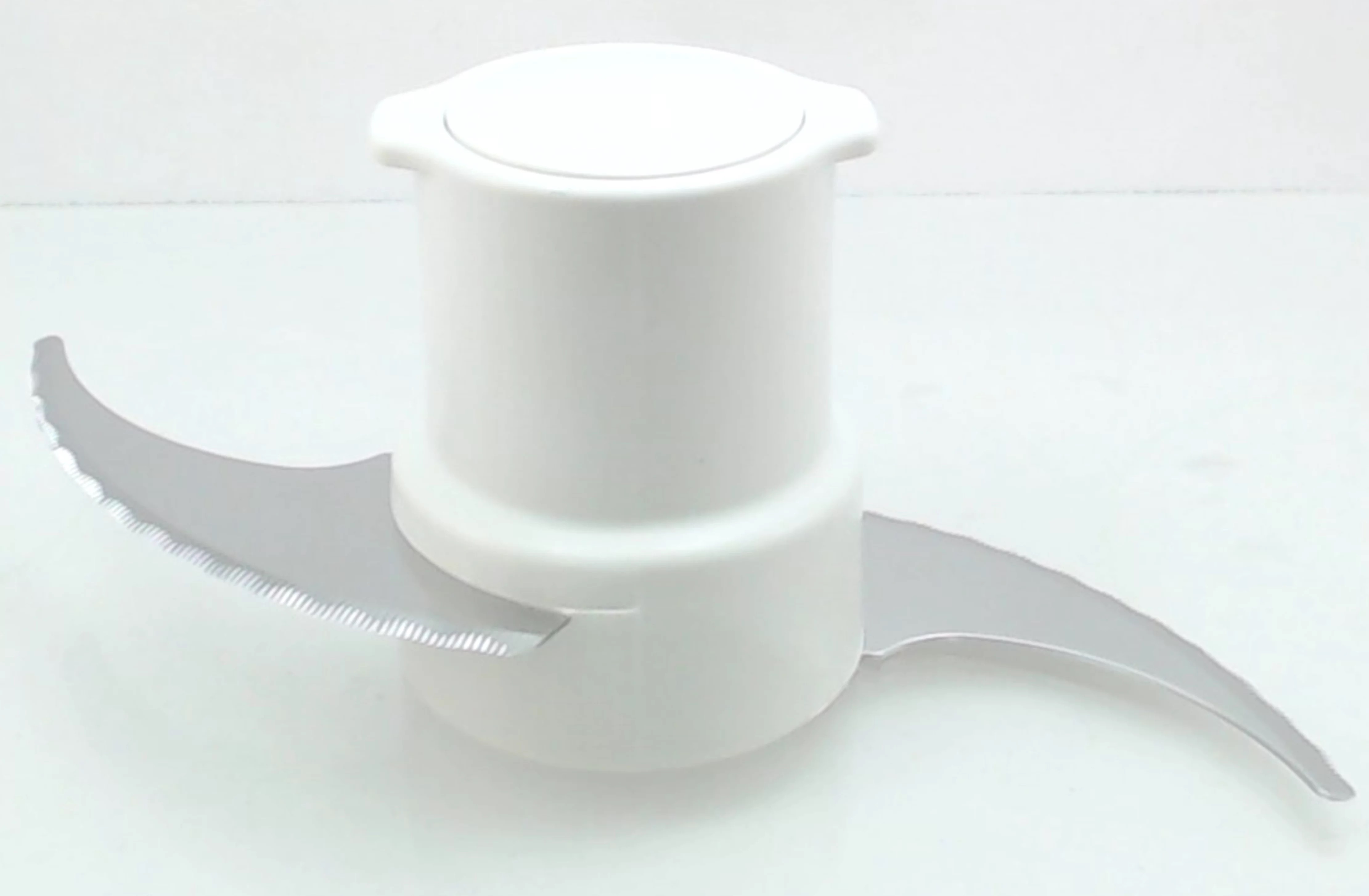

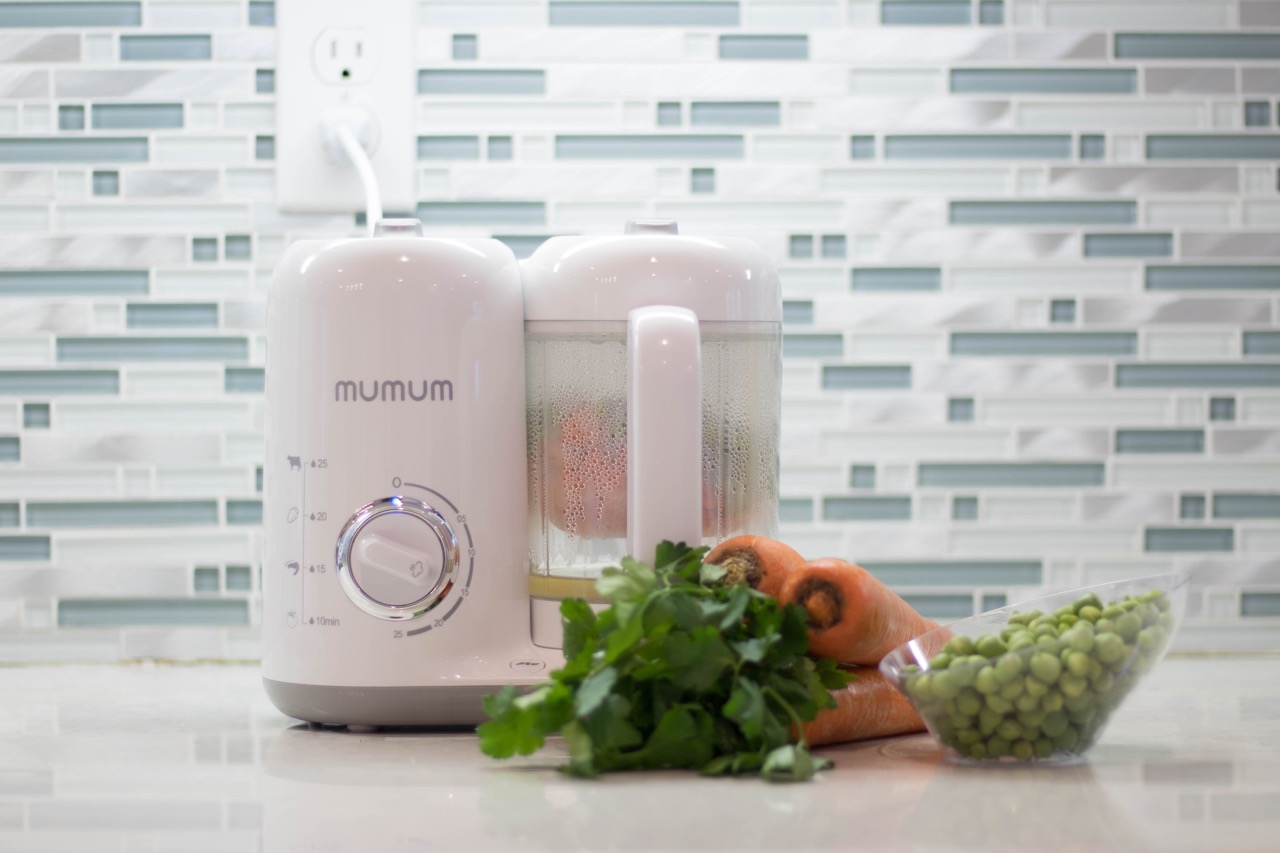

0 thoughts on “What Can I Do With A Food Processor”